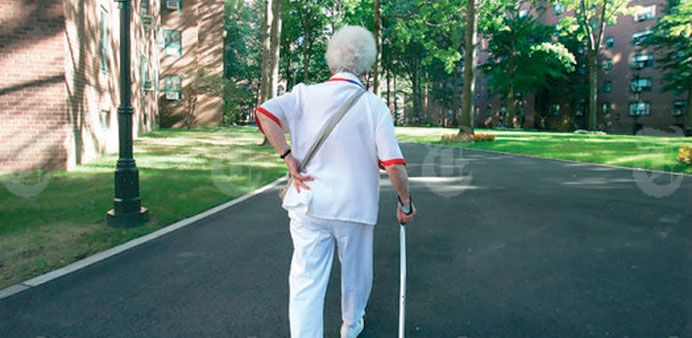|
The study of worldwide population trends reveals a clear challenge with important consequences for our social, cultural and economic lives: the steady increase of elderly people, both in total and proportional numbers. |
By 2025, the world will have almost 800mn people over the age of 65. About 556mn of them will be in developing countries, another 254mn in developed ones. On a global scale, Asia absorbs the majority, and it seems as though Latin America will have “only” about 70mn. These demographic forecasts are not exact, but they offer an idea about the magnitude of the challenge.
The United Nations’ World Population Monitoring recently estimated that the percentage of women expected to live past 80 in all regions of the world is higher than the percentage of men. This will also pose unprecedented challenges.
Africa registers the lowest percentages, and North America (US and Canada) registers the highest. This suggests that there is a very close relation between longevity and socioeconomics.
Additionally, there are about 7bn people today living on the planet, up from 2bn in 1920. Recent demographic calculations indicate that the world population grows by 1bn every 12 years. This is not good news.
Every society has its vulnerable groups, even if their magnitude and diversity change within a country, from one country to another, or from one time period to another. Social vulnerability is ever changing. The relative position of individuals and families on the social and economic ladder is modified by the economic trajectory of each country. There is one constant, though, and it’s that senior citizens are always present in the most fragile segment. The historical development of human nature imposes a complicated condition that social institutions rarely mitigate or soften.
There seems to be a consensus that in the last stage of life – old age – most human beings are intensely vulnerable and dependent. But the degree of fragility varies within this segment of the population. There are many millions of people who spend the last stage of their lives in very difficult circumstances – poor, ill, alone.
Geriatrics, gerontology and demography have contributed enormously to understanding the particularities of old age. There are other disciplines that can also help us understand the profile of the elderly and the phases of ageing, but I prefer to focus on these three. We should also take into account the work of caregivers and nurses who take care of the elderly since these professionals have and will have a relevant and growing role in the future. Maybe the future will have an even greater demand for these professionals than for engineers, designers, etc.
Geriatrics, as a medical field, is growing for obvious reasons. Through geriatrics, we have a scientific understanding of how hard it is to reach this stage and that it is even harder to stay there for a long time, given that physical and mental deterioration is unavoidable at that age. Hence, one must recognise the elderly’s vulnerability. Geriatrics is geared towards the study of prevention, diagnosis, treatment and rehabilitation of illnesses: It solves senior citizens’ health problems, if there are resources to do so.
Gerontology is also a booming, interdisciplinary science. Today it studies ageing and old age while considering psychological, biological and social aspects given that these directly influence how a human being experiences aging.
Demography shows us an X-ray of the human population – its changes and fluxes. It allows us to quantify the present and future magnitude of growing old. It is indispensable in the decision and policy-making processes, so that we can anticipate measures to solve different problems through public policy.
In the not-so-distant future, life expectancy will continue to increase. Demographers define this as “an estimate of the average of years lived by a group of people born in the same year, if mortality rate movements remain constant”. I fear that this increased life expectancy may not be entirely good news when social inequality and poverty run rampant everywhere.
In general, longevity involves the greater, relative weight of present and future old age. There are several underlying factors: lower birth rate (planned and desired), the continuous decline of infant, juvenile and adult mortality rates, as well as the remarkable advancements in preventive and corrective medicine. There is also the universalisation of the public health systems, which have been decreased by the economic policies of fiscal austerity in recent years.
Demographic ageing is a process that gradually changes the “population pyramid”. Until now, in every region of the world, children, youth and adults dominated the pyramid to different degrees and levels. But this is changing – and this change will in turn lead to a new global society.
But what’s alarming is that existing social, political and cultural institutions do not have the capacity to deal with the coming challenges that this change will pose. The tendency toward social helplessness and vulnerability of the elderly will continue to increase as economies fall into recession and austerity measures are applied. - Worldcrunch/America Economia



